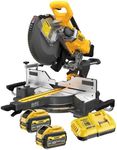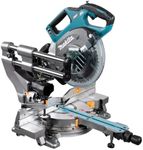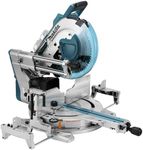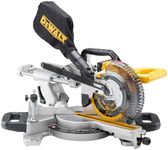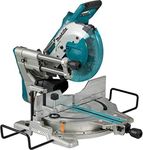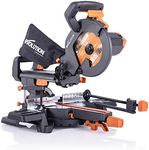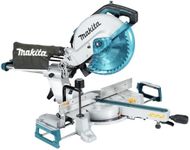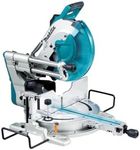Buying Guide for the Best Miter Saws
Choosing the right miter saw can make a significant difference in the quality and efficiency of your woodworking projects. Miter saws are essential tools for making precise crosscuts and angled cuts, and they come in various types and sizes. When selecting a miter saw, consider the type of projects you plan to undertake, the materials you'll be working with, and the space available in your workshop. Understanding the key specifications will help you make an informed decision that aligns with your needs.Blade SizeThe blade size of a miter saw determines the depth and width of the cut it can make. Common blade sizes are 8-inch, 10-inch, and 12-inch. Larger blades can cut through thicker materials and are suitable for larger projects, while smaller blades are more manageable and ideal for smaller, detailed work. If you're working on large construction projects or cutting thick lumber, a 12-inch blade might be necessary. For smaller, more precise tasks, a 10-inch blade could be sufficient.
Type of Miter SawMiter saws come in different types: standard, compound, sliding compound, and dual compound. A standard miter saw is great for basic crosscuts and miter cuts. Compound miter saws can tilt in one direction for bevel cuts, while dual compound saws tilt in both directions, offering more versatility. Sliding compound miter saws have a sliding arm that allows for cutting wider materials. If you need versatility for complex cuts, a dual compound or sliding compound saw might be ideal. For simpler tasks, a standard or single compound saw could suffice.
Motor PowerMotor power in miter saws is measured in amps, and it affects the saw's ability to cut through different materials. Higher amp motors can handle tougher materials and make smoother cuts. Typically, miter saws range from 10 to 15 amps. If you're working with hardwoods or thicker materials, a higher amp motor will be beneficial. For lighter materials or occasional use, a lower amp motor might be adequate.
Cutting CapacityCutting capacity refers to the maximum width and thickness a miter saw can cut. This is influenced by the blade size and the type of miter saw. Sliding compound miter saws generally have a larger cutting capacity due to their sliding feature. Consider the size of the materials you'll be cutting most often. If you're working with large boards or wide pieces, ensure the saw has the capacity to handle them.
Dust CollectionDust collection is an important feature for maintaining a clean workspace and protecting your health. Miter saws can produce a lot of sawdust, and having a dust collection system can help manage this. Some saws come with built-in dust bags or ports for attaching a vacuum. If you're working indoors or in a small space, a good dust collection system is crucial to keep the area clean and reduce airborne particles.
PortabilityPortability is a consideration if you need to move your miter saw between job sites or around your workshop. Some miter saws are designed to be lightweight and easy to transport, while others are heavier and more stationary. If you plan to use the saw in multiple locations, look for models with handles or compact designs. For stationary use, weight might be less of a concern.





